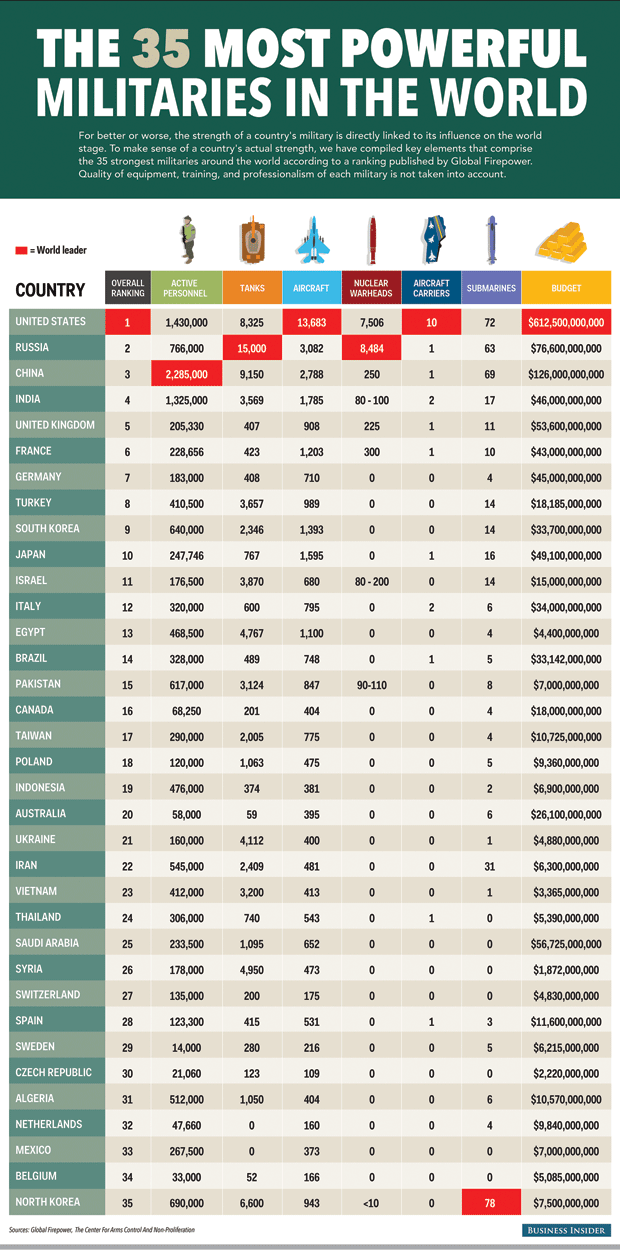|
There's only one real way to compare military
strength, and thankfully the world hasn't had many opportunities lately.
|
|
 |
|
Despite the potential powder keg in the South China Sea, standoffs in
Ukraine, and proxy wars throughout the Middle East, inter-state warfare
between the world's military powers has been all but banished from the
global scene (for the time being, at least).
For a simpler evaluation of military power, we turned to the Global
Firepower Index, a ranking of 106 nations based on more than 50 factors
including overall military budget, available manpower, and the amount of
equipment each country has in its respective arsenal, as well as access
to natural resources.
|
|

|
|
The index focuses on quantity, ignoring significant qualitative
differences — North Korea's 78 submarines, for instance, aren't exactly
state of the art. It also does not factor in nuclear stockpiles, which
are still the ultimate trump card in geopolitics. And it doesn't
penalize landlocked nations for lack of a standing navy.
We've created a chart to compare the top 35 militaries according to the
Global Firepower Index. The ranking was released in April (before events
like the Russian invasion of Eastern Ukraine in August, ISIS's blitz
through Iraq, and the flare-up between Israel and Hamas) and involves a
complex set of data that is subject to ongoing adjustments and
corrections.
|